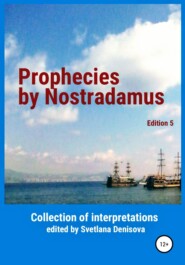По всем вопросам обращайтесь на: info@litportal.ru
(©) 2003-2024.
✖
Solar system / Alternative theories
Автор
Год написания книги
2017
Настройки чтения
Размер шрифта
Высота строк
Поля
*v
/R,
m
– mass of planet, v – speed of planet, R – radius of rotation.
Under the Newton’s law the gravity force is defined by the formula:
Fg = G*m
*m
/R
m
m
and m
– mass of the Sun and planet, R
– square of the distance between them, G – gravitational constant ~6.67384*10
m?/(kg/с?).
Let's record equality of two forces:
G*m
*m
/R
=– m
*v
/R.
Let's simplify the expression by multiplying the both sides of the equality by R and dividing by mp, and we will get:
G*m
/ R=-v
It follows, that the less the Sun mass is and the more is the distance from it, the slower is the movement of planets in the orbit. Conversely, than the Sun mass is greater and the the radius is smaller, the speed is greater. This is confirmed by the modern calculations and measurements of the planets speed (see table 1). Another conclusion from this formula is, that the orbital velocity does not depend on the mass of the satellite, but only on the mass of the central body and the distance to it. Saturn has two orbits, on each of which three different satellites are (for example: Diona, Elena, Polydeuces), but they have the same speed. The mass of the Sun continuously decreases, decreasing the speed of the satellites.
With the change of the orbit, the speed of a celestial body in the orbit changes too. This was also known to ancient Greek astronomers: «… ones of them moved along a greater circle, the others – along the smaller. They moved quicker on smaller circles, but slower on the greater ones» [Plato, dialogue "Timaeus"]. With the orbit decrease, the speed of celestial body and centrifugal force increase.
Dynamics of orbits
Table 1 sets out the main characteristics of the planets of the Solar System (hereinafter the SS). The asteroid belt (destroyed planet Phaeton) in the table is represented by its moon Ceres. Two dwarf planets: Pluto and Haumea represent the Kuiper belt.The data for the Table 1 has been taken from Wikipedia 07.07.2014 and may not match the further changes.
Based on the formulas given above and the data in Table 1, we can calculate the approximate values of the gravitational force and centrifugal force for the main planets of the Solar System (SS).
The results of calculation of the gravity force and centrifugal force for the 11 planets are shown in table 2 in the order of their distance from the Sun.
For all planets they are not equal. Consequently, they all have a spiral orbit
From table 2 it is clear, that gravitation force prevails at 4 planets nearest to the Sun (Mercury, Venus, Earth, Mars). If other possible influences on their orbits are not taken into account, it should be assumed, that they spin along the decreasing orbits – a descending spiral. Among them Mercury has the fastest decrease, and Mars has the slowest one.
Centrifugal force is predominating for the planets Jupiter, Saturn, Uranus, Neptune. Therefore, their orbits are ascending, it is a rising spiral. Among them Jupiter has the fastest removing and Neptune – the slowest.
Orbit of Ceres (Asteroid belt) is descending and is the most stable among them. It is a division between ascending and descending orbits. Among the four gas giants the Neptune has the most stable orbit. It is also a division between the descending and ascending orbits. In front of the Neptune the centrifugal force prevails, but behind it the gravity force prevails. The orbits of Pluto and Haumea are descending and the most stable of all. Similar processes occur at numerous satellites of gas planets. The nearest of them have descending orbits, but remote have ascending orbits.
Let's calculate, what the Earth orbit would be like, if the gravity force equaled to centrifugal force: 35,404*10
n.
R=?(G*m
*m
/Fс)
R=? (6.67384*10
*1.9891*10
*5.97219*10
/35.404*10
)=1.49643*10
m
The difference between the actual and calculated orbits is 0.00045*10
m or 45000 km (it is ~3.5 of the Earth diameters). Consequently, the predominance of the gravity force by 0,021*10
n gives the Earth orbit decrease by 45000km in comparison with that one, which should be at the given speed 2,978*10
m/s. Such difference in radii shortens the orbit length by 2? (R
-R






